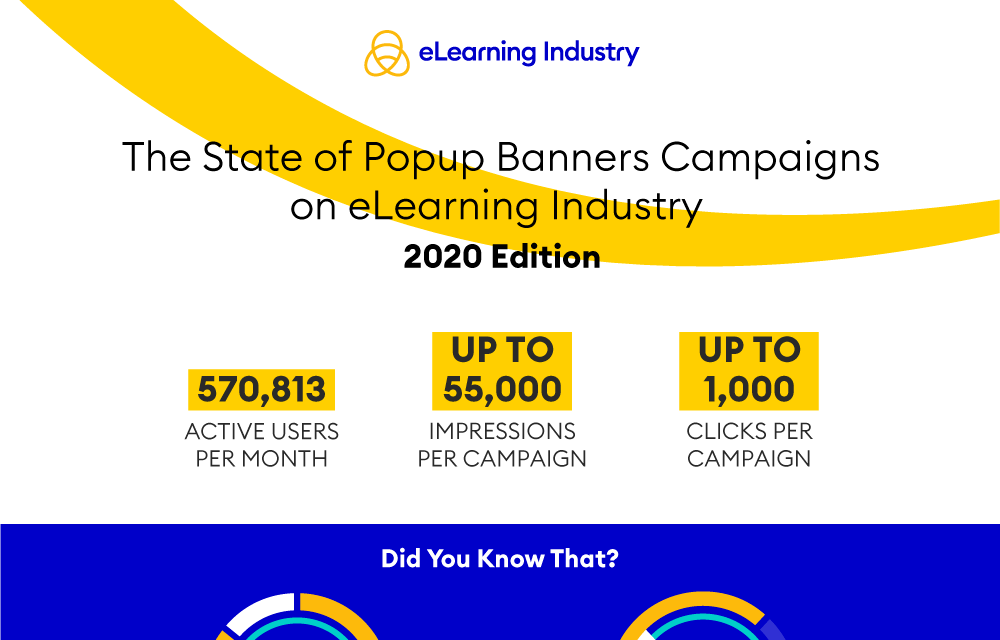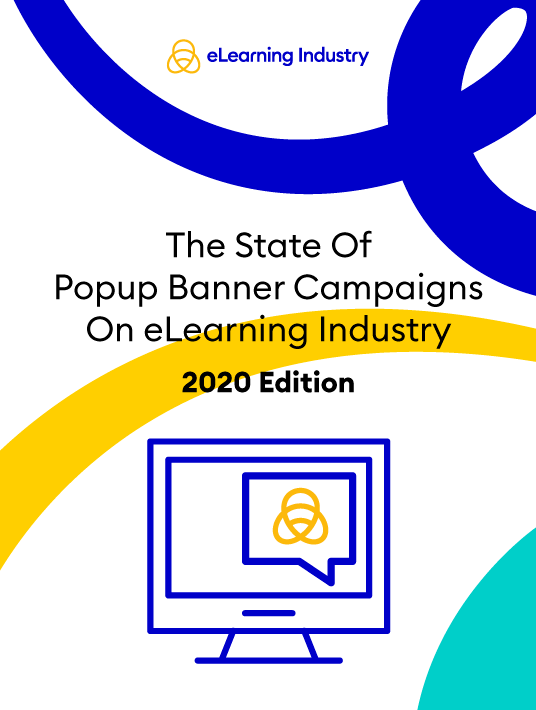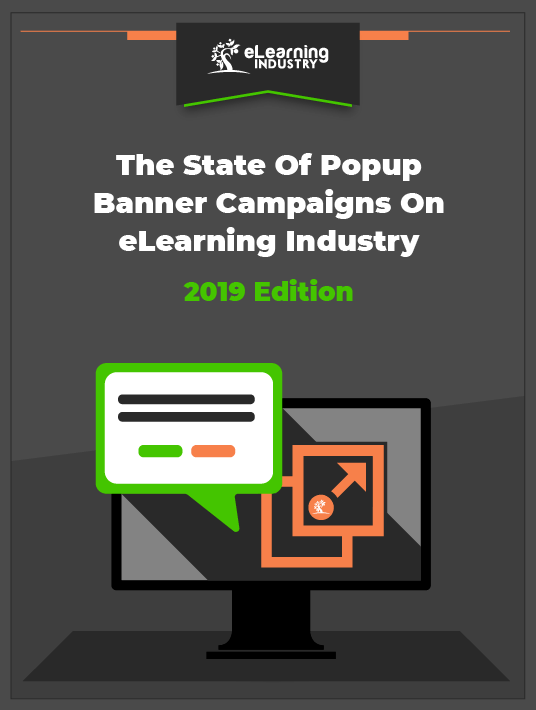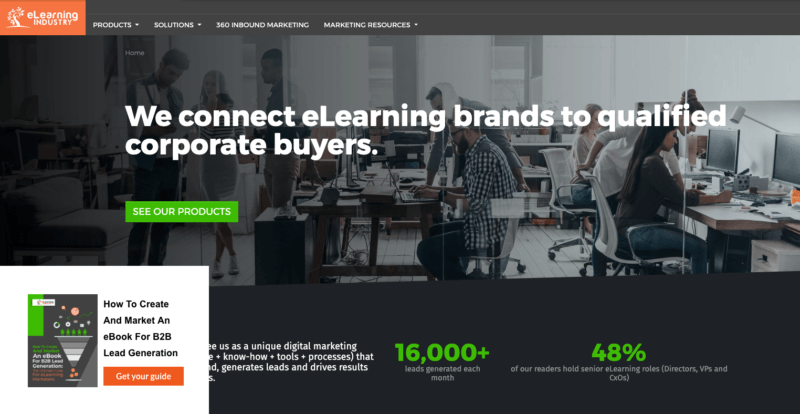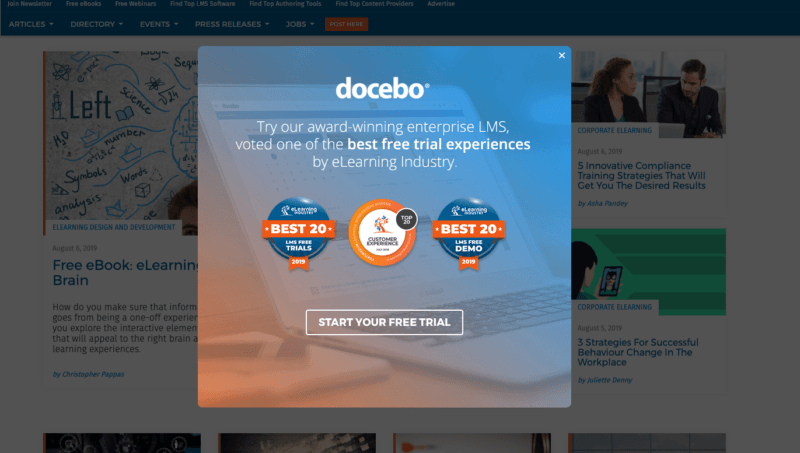Your landing page is the final chance for you to finally convert a prospect into lead. All your marketing efforts before this will fail if your landing page isn’t optimized.
The reason is simple. The purpose of a landing page is to intrigue your visitors and to compel them to take a desired action toward being your customer. This process requires a thought-through and well strategized page design and content. Failing to create one will cost you crucial leads.
So, undoubtedly you must focus on optimizing your landing pages. Speaking of how you can do that, this chapter will make life easy for you.
1. Your Message Should Speak Clearly About Content On Your Landing Page
The first and most horrendous mistake marketers make is using a clickbait title or message in their popup banner copy which doesn’t match the offer/content on landing page.
It’s clear that doing this may get your popup banners a fine amount of traction and decent click numbers. However, in the longer run, these clicks will just cost you money without giving enough ROI.
And the reason for that is simple. You used a fake (or borderline fake) offer to lure your prospects into clicking through your popup banner ad copy. However, when they clicked for your enticing offer, they found out it was clickbait, so they turned their backs.
Result? NO CONVERSIONS! And, of course, a ruined image.
The simplest way of making sure this doesn’t happen is using a text copy that speaks about the content on your landing page and intrigues the users with that.
2. Nobody Likes Clutter
A whole bunch of information bundled into a single web page can come off as annoying to your prospects. Even if they are highly interested in your products/services, they may not want to filter through the clutter on your web pages.
As a result of this, they may bounce. Or be distracted by the information so much that they forget the purpose of them visiting your landing page. Bummer, right?
So, take action on this. Save yourself from wasting your money, ideas and time that will be wasted by running weak popup banner campaigns because of cluttered landing pages.
Understand that, around 48% of eLearning landing pages contain multiple offers. While serving the consumer with multiple offers in one place may seem like a good idea, in reality it can bring down your conversion rates by 266%.
For this reason, you should in no case let your users be distracted by multiple offers or anything else on your landing page. Keep it simple, concise, to the point, and 100% relevant.
3. Improve Page Loading Speeds
What’s your first reaction to a website that is taking too long to load? And, have you ever noticed what “too long to load” means to you?
The whole deal relies on perception and so varies from human to human. A 2017 study, conducted by Akamai, states that over 53% of web users leave a website that doesn’t load in 3 seconds.
You know what that means? This means that you are simply losing over half of your visitors and prospects by not improving your website’s loading speeds.
It’s clear that you must work on it.
Speaking of how, the first thing that you need to do is take a page speed loading test. So, go to Google Page Speed Insights, paste your website/webpage URL and hit enter. The tool will take you to a new page displaying your page’s current loading speed along with all the reasons that your website is taking forever to load for.
The next thing you’ll need to do after this is have a look at these issues and see how you can resolve them. For the best and risk-free results, it’d be better to contact your developer for this.
4. Use Relevant And Spot-On Visuals
Visual content is one of the most valuable assets for your eLearning business.
Be it a comprehensive infographic, or a stunning explainer video talking about how your products and services work and how they can add significantly to your prospects profits— visuals are super-important and always work.
However, if not chosen smartly, the results may not suffice. For a better understanding, read below to have a better idea on how visuals can work wonders for your eLearning brand.
- Humans Respond to Visuals better
Nearly 50-80% of the human brain is dedicated to processing visual information like shapes, colors, movement, patterns, etc. For this reason, we process and respond to visual information much quicker and retain it with better efficiency.It’s clear that visual content is more easily consumed, processed and comprehended by users across the globe.
- Visuals Easily Convey Your Message
While you may have to use a thousand words to convey your message using an article or blog post, the same message may be conveyed easily in a more comprehensive way using visuals.No wonder, a visual is worth a thousand words.
- Improve Conversions
While having a bunch of attractive and relevant images on your landing page can keep visitors glued for a longer span, that’s not all that these can do.Using the right actionable visuals on your landing page can turn dirt into gold for your eLearning business. Just be smart while choosing images and you’ll see the results.
5. Work On Your Opt-In Form
Another mistake that most eLearning marketers make is by having a gigantic opt-in form. Something that consumes too much of the prospect’s time.
This can be a quick turn off for many of your visitors.
As users click through your popup banner ad copy, they may not always want to fill out huge a*s subscription forms. Honestly, it degrades user experience. Optimally, none of your users must have to spend too much of their time filling-up your opt-in forms.
Trust us. You don’t need to know everything about your prospect right away. It’s a process and having a small opt-in form is one crucial part of this process.
![eBook Release: Complete Popup Banners Guide For eLearning Companies]()
eBook Release
Complete Popup Banners Guide For eLearning Companies
Master the use of popup banner ads for your eLearning business. Our guide will help you learn tips, best practices, metrics & optimization tactics.
6. Max-Out The Power Of Your CTA Buttons
Once again, creating Call-To-Action buttons that get clicked is every successful marketer’s goal. Why? Because effective CTA buttons will bring subscribers, orders or attendees to your webinars.
There are several ways to improve your Call-To-Action click rates. You might try a little tweak by optimizing your copy. You might also add some content with enticing color text.
The CTA that you decide to use is the gateway to increase your conversions. So, think carefully about what kind of CTAs you actually need on your landing page.
More on copywriting and CTAs that convert in Chapter 9.
Conclusion
As you invest your time, money and ideas in popup banner ad campaigns, an air-tight implementation will become crucial to you. This can’t be achieved without optimizing your landing pages.
And so, in this chapter we discussed everything that’s required for optimizing your landing pages for a popup banner campaign.


